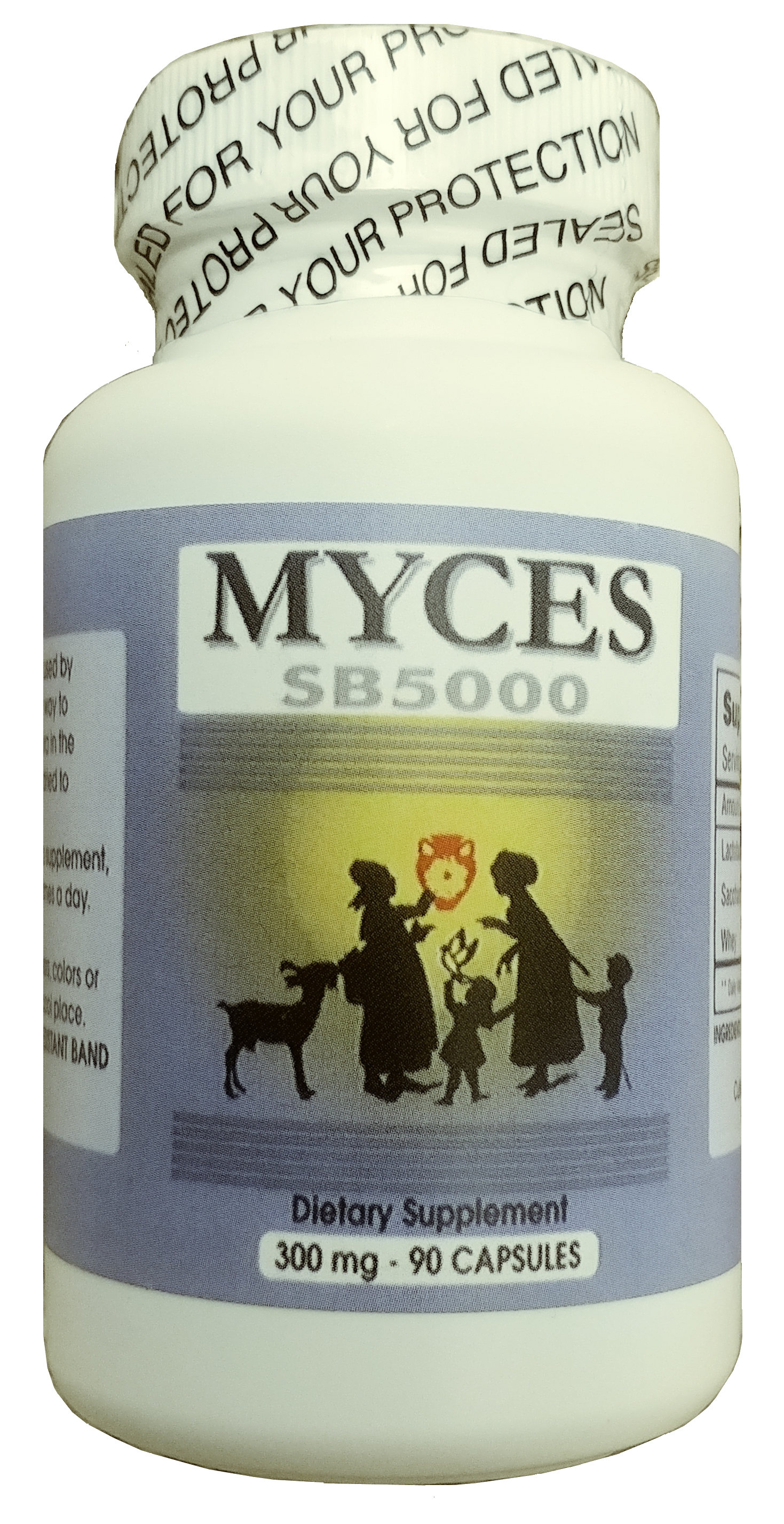
What is Myces SB5000™ All About?To the people of the Caucasus Mountains in Soviet Georgia, this Kefir that they have used to prevent and treat illness for over a thousand years, is a wonderful blessing. Kefir has antibiotic and antiviral properties, which may help explain the long lives and good health for which the natives of the Caucasus are known.In 1908, Metchnikov wrote in his book, “The Prolongation of Life” that the secret to longevity that he found in the Russian mountains was the fermented goat's milk that the people were making and eating. The history of kefir is centuries old. Fermented such as yogurt and kefir are well known in Eastern Europe, but perfected in the Caucasus region. Fermented Foods History in Eastern Europe Lactic acid bacteria (LAB) have been used to ferment foods for at least 4,000 years. Without understanding the scientific basis, people used LAB and kefirs (bacteria and yeast complexes) to produce cultured foods with improved preservation and with different characteristic flavors and textures from the original food. A wide variety of foods, including sausage, ham, wine, cider, beef, sauerkraut, olives, and pickles contain LAB and otherGRAS (“generally recognized as safe”) microorganisms. LAB are used for many fermented milk products from all over the world as well, now, including yogurt, cheese, butter, buttermilk, kefir and koumiss. In the former Soviet Union, kefir accounts for 70% of the total amount of fermented milk consumed. It is also well known in Israel, the Middle East, Sweden, Norway, Finland, Hungary, Poland, Germany, Greece, Austria and Brazil. How Kefir is Made Like yogurt, kefir is milk based, made either from cow's milk or goat's milk (and in the case of Myces SB5000™, from goat milk). The process to make kefir involves fermenting milk with what are called kefir grains. The grains are a mass of safe bacteria, yeast and polysaccharides (complex carbohydrates.) The grains are a living, growing mass that have been the subject of much study to define exactly what makes up the grains. Origin, storage, temperature, growth, media (what you feed the kefir to make it grow) and handling, all influence the make-up of the grains. The polysaccharides that make up the mass of the kefir grain have been shown to be unique and have been given the name kefiran. The fermentation process takes about twenty-four hours, during which the grains change milk into a sour-tasting drink. Many years of consumption in these countries have demonstrated that the microorganisms in kefir are not pathogenic or disease-causing. Kefir is actually a preventative food. It possesses antimicrobial activity against a wide variety of gram-positive and gram-negative bacteria and against some fungi. In a recent study by Zacconi et al, the antagonistic effects of kefir against Salmonella were attributed to the complexity and vitality of the unique microflora found in this complex. Folklore The folklore of kefir enjoys a rich tradition of health claims. In the former Soviet Union, it is used in hospitals and Santaria for a variety of conditions, including:
In your quest for health, make sure that you focus on the foundations of health, first, foremost and always. With the basics in mind, keep your body detoxified of heavy metals and pathogens that interfere. Boths of these are things in which Myces SB5000™ shines. |
|
Myces SB5000™ Encapsulated Probiotic Kefir from the Russian Caucasus RegionMyces SB5000™ is a specialty product brought from the Caucasus region of Soviet Georgia where the people are known to live well beyond 100 years of age (and sometimes to 145 years of age). INGREDIENTS: This dietary supplement contains live probiotics microorganisms, yeasts, proteins, minerals, enzymes and naturally occuring vitamins and minerals. List of the individual 40 probiotics strains in Myces encapsulated goat kefir:
Myces SB5000™The probiotics in Myces SB5000™ produce a cleansing effect on the whole body which helps to establish a balanced inner ecosystem or flora for optimum health maintenance. They are grown in goat's milk, freeze-dried and then placed in capsules.  Longevity in the Caucasus Mountains RegionThe special kefir consumption of this region has also been associated with longevity in Caucasus Mountains where the drink was fermented naturally in bags made of animal hides. (Dr. Komai) This is from the folklore of the region and we make no claims as to the effectiveness of our kefir to treat or control diseases. It is, however, a very healthy drink which can help control bad bacteria and yeasts in the digestive tract.Various strains of Caucasus Kefir were eventually brought to Russia and then the U.S. Our particular strain was brought to the U.S. by a missionary in 1983. We have kept this complex alive since that time and have studied the many microorganisms it contains, including Saccharomyces boulardii, a now well-known yeast which is antagonistic to Candida albicans and pathogenic bacteria which cause severe gastrointestinal upset for the travelers. After years of work, we were able to stabilize and freeze-dry the complex so that it could be encapsulated and shipped to those in need. For thousands of years, the villagers in the Caucasus Mountains never allowed their precious complex to be used outside their area, but eventually, kefir grains did get out of the region. There are various strains among different villagers, however, with varying unique properties. Our particular strain comes from a missionary (who was originally born and raised in certain Caucasan village that shall remain nameless) and who convinced them that this discovery was too important to be used by only a few people and brought the process to the U.S. in 1983. It is now our amazing Caucasan kefir culture. We are honored that the people of this village in the Caucasus have shared their unique development with us.
More About the Caucasus Mountain Region of Russia From Which Myces SB5000™ ComesThe very early beginnings of milk kefir are part legend and a little bit of mystery. Most all references and research points to kefir originating in North Ossetia (the Northern area of the Caucasus Mountains, between Russia and Georgia). It was there that the Ossetians, descended from the nomadic Scythians who settled in the area, first harnessed kefir grains to ferment milk in simple leather bags. It's hard to say what these highlanders of the Caucasian Mountains did on a day-to-day basis with kefir, or where exactly they first happened across it. Unfortunately there were no written records of this, only a story passed down (and probably a good helping of exaggeration with it!). Nonetheless, as the story progresses into Russia, it becomes more accurate as names, dates and written records of kefir take the place of legend and story-telling. This is the story of kefir: |
|
||||||||||||||||||||||||||||
Copyright 2008-2017 Healthy-Living.Org. All rights reserved.
These statements have not been evaluated by the Food and Drug Administration. No product mentioned herein is intended to diagnose, treat, cure or prevent any disease. If you are pregnant, nursing, taking medication, or have a medical condition, consult your physician before using this product.
The information on this website is intended as a sharing of knowledge and information from the research and experience of the Healthy-
Living.Org staff and contributors. It is not intended to replace a one-on-one relationship with a qualified health care professional and
it is not intended as medical advice. You should not use the information on this site for diagnosis or treatment of any health
problem or for modification of any medication regimen. You should consult with a healthcare professional before starting
any diet, exercise or supplementation program, before starting or discontinuing any medication, or if you suspect
you have a health problem. You should keep in mind that cited references to ongoing nutritional scientific
study are most likely not accepted by the FDA as conclusive. These references and mentions
of potential benefits are disavowed as product claims and are only included for educational
value and as starting points for your own research. No food or supplement can be
considered safe for all individuals. What may benefit 999,999 of a million people
may harm you. Therefore, no one can take responsibility for your health
except you in consult with your trusted health professional.
 Myces SB5000™ are all natural freeze-dried capsules.. This unique probiotic is made in a special way from goat’s milk kefir and contains saccromyces and many other healing properties to aid your health and longevity. Far easier and infinitely better than making your own kefir at home, this product makes it simple to have a clean, well-functioning intestinal tract. Just swallow, two to three capsules daily.
Myces SB5000™ are all natural freeze-dried capsules.. This unique probiotic is made in a special way from goat’s milk kefir and contains saccromyces and many other healing properties to aid your health and longevity. Far easier and infinitely better than making your own kefir at home, this product makes it simple to have a clean, well-functioning intestinal tract. Just swallow, two to three capsules daily.